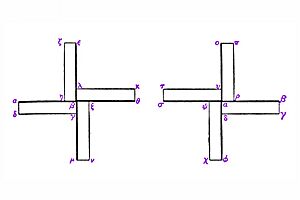Asclepiodotus (philosopher) facts for kids
Asclepiodotus Tacticus (Ancient Greek: Ἀσκληπιόδοτος Τακτικός), also known simply as Asclepiodotus, was an ancient Greek writer and thinker who lived around the 1st century BC. He is famous for his book called Tactics, which is a short guide about military tactics. His work is very important because it helps us understand how armies were organized and fought during the Hellenistic period (a time after Alexander the Great's empire).
About His Life
We don't know much about Asclepiodotus's life. Ancient Greek writings call him "Asclepiodotus the Philosopher." Some people think he might be the same Asclepiodotus mentioned by Seneca, a Roman writer. Seneca said that Asclepiodotus was a student of Posidonius, another famous thinker who also wrote about military tactics.
If this is true, Asclepiodotus was probably born in the late 2nd century BC or early 1st century BC. He likely studied in Rhodes, an island where Posidonius had his school.
His Writings
Asclepiodotus's only known book is called Tactics. It has twelve chapters and focuses on military strategy and theory. This book has been passed down through many old manuscripts (handwritten copies). Along with the text, these manuscripts include drawings that are believed to be copies of Asclepiodotus's own diagrams.
His book Tactics was more of a theoretical guide than a practical one. However, it's still very valuable today. It helps us understand the special words and terms used for the phalanx and other military formations during the Hellenistic period.
The book mainly talks about the phalanx, which was a large group of soldiers fighting closely together. It also discusses other types of soldiers, like peltasts (light infantry) and cavalry (soldiers on horseback). Interestingly, some things he wrote about, like battle chariots and elephants, were not really used in battles anymore by the 1st century BC. This suggests he might have based his work on older armies or earlier books.
Chapters in Tactics
Here are the topics covered in the chapters of his book:
| I. | The Different Branches of the Army |
| II. | The Strength and the Names of the Subdivisions of the Hoplite-Phalanx |
| III. | The Disposition of the Men both in the Entire Army and in its Subdivisions |
| IV. | The Intervals between the Soldiers |
| V. | The Appropriate Size and Character of the Arms |
| VI. | The Phalanx of the Light Infantry and of the Targeteers, and the Disposition and Names of its Subdivisions |
| VII. | The Phalanx of the Cavalry, and the Names of the Whole Body as well as of its Subdivisions |
| VIII. | Chariots |
| IX. | Elephants |
| X. | The Terms in Common Use for Military Evolutions |
| XI. | The Various Arrangements of the Divisions of the Army on the March |
| XII. | The Commands used in Military Evolutions |
The writing style in Tactics is very direct and to the point. It doesn't have many exciting stories. It's mostly a dry but very organized guide. We don't find many historical details in it, but sometimes there are interesting facts, like how the Thessalian cavalry fought in a rhomboid (diamond) shape.
Some parts of Tactics might have come from the writings of Polybius or even older textbooks. It's not completely clear how Asclepiodotus's book relates to his teacher Posidonius's work on military tactics. Some experts believe that Posidonius's text was a direct or indirect model for Asclepiodotus's book. It might also have influenced other writers like Aelianus Tacticus and Arrian. Another idea is that Asclepiodotus's book was like a basic outline of the lessons his teacher Posidonius gave.
Asclepiodotus's Tactics was a main source for Aelian's book, On Tactical Arrays of the Greeks. However, Aelian doesn't mention Asclepiodotus as an influence. This could be because Aelian didn't want to show how much he relied on Asclepiodotus. Or, it might be because Asclepiodotus was just passing on Posidonius's ideas, whom Aelian does mention.
Besides military tactics, Asclepiodotus also wrote about natural history. Some of his ideas on this topic are found in Seneca's book Naturales Quaestiones. These ideas include topics like earthquakes, volcanic eruptions, the nature of winds, and underground water.
Where to Find His Work
Over the years, many scholars have published editions of Asclepiodotus's Tactics, making it available for study. Here are some of the important editions:
- Angelo Mai: Spicilegium Romanum, vol. IV, Rome 1840 (Latin; only chapters 1–2)
- Hermann Köchly and Wilhelm Rüstow: Griechische Kriegsschriftsteller, Bd. II, I: Die Taktiker (Asklepiodotos, Aelianus), Leipzig 1855 (German; the first full edition)
- William Oldfather, et al.: Aeneas Tacticus, Asclepiodotus, Onasander (Loeb Classical Library 156), London and Cambridge: Harvard University Press. 1923 (English)
- Lucien Poznanski: Asclépiodote, Traité de tactique (Collection des Universités de France), Paris 1992; reprinted 2002 (French; considered a very important edition)
- Giuseppe Cascarino: Tecnica della falange. In Appendice: “Il Trattoto Tactico di Asclepiodoto,” Città del Castello: Il Cerchio, 2011 (Italian)
- Kai Brodersen: Arrianos, Asklepiodotos: Die Kunst der Taktik, Berlin and Boston: De Gruyter, 2017 (German).
See Also
- Ancient Greek military
- Hellenistic armies
- Military history of the Hellenistic period


